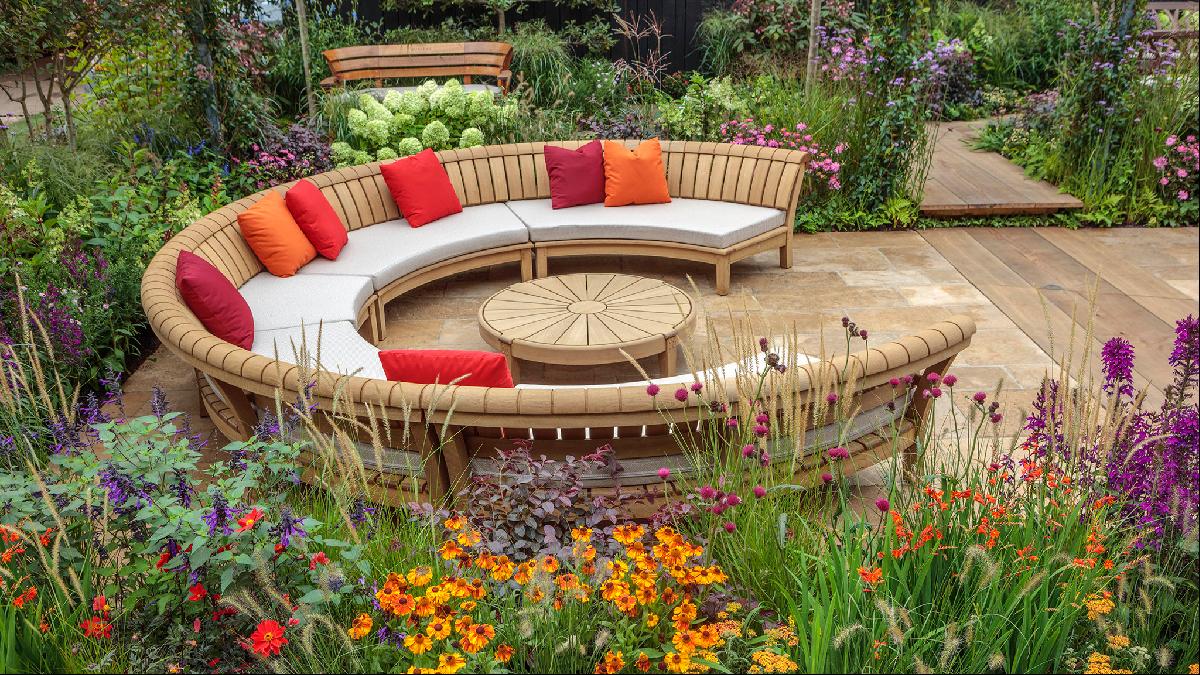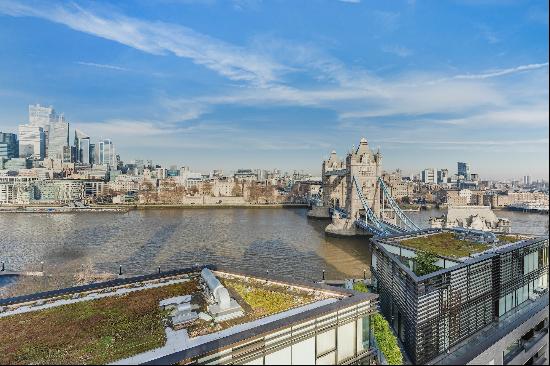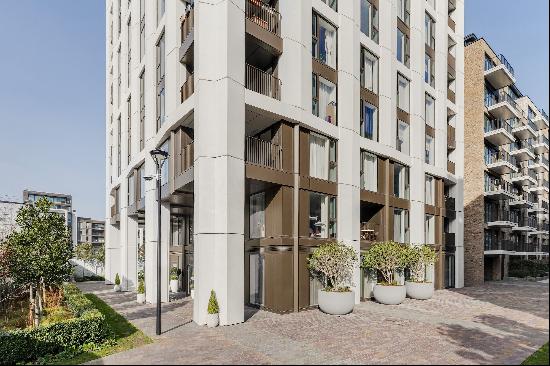
By Jo Thompson
A garden should be a space to enjoy throughout the year, with something to delight even on a damp autumnal day. My aim as a garden designer is to create somewhere that looks and feels exactly as if it should be there and makes the most of the location. That is why Midgham House, Berkshire, on the market for £6.25m, is interesting, with its established garden setting and mature grounds. The role of the garden designer there would be to add to the existing landscape and create somewhere that could be enjoyed in every season.

Add a splash of colour
I love using colour to create atmosphere and that will often be the starting point of how I think about a garden. The colour palette of plants used in a design is vital in creating notions of different areas in the garden, whether it is conjuring a sense of arrival, a space for entertaining or a secluded sitting area for quiet relaxation.
If designed well, the mix of colours will evolve through the seasons: beyond the obvious spring and summer flowers, it is important to think about what will bring colour during the autumn and winter. Trees and shrubs are the “bones” of the garden, providing structure, but at this time of year they can pull focus with a wonderful blaze of colour. I would choose trees Sorbus ulleungensis “Olympic Flame” (rowan, pictured), Parrotia persica (Persian ironwood) and Liquidambar (sweetgum) for their vivid autumn leaves, and Prunus serrula (Tibetan cherry) and Acer griseum (paperbark maple) for the colour and texture of their bark. All are available from RHS Plants, with prices from £29.99.

Respect the setting
My gardens are often described as romantic, conveying the spirit of the place and connecting with who and what has gone before, as well as respecting the wider landscape. Midgham House is set in historic parkland on the site of a former Palladian manor so there is a rich heritage and maturity to the landscape, which any new design elements should complement.
It takes time to study a site, both how it is now and its past. A true understanding of the location is critical to bringing a project to life, which is why I do not believe in an “off the peg” approach to design. When the design comes together, the planting plan, hard landscaping and any features or focal points should nod to the wider setting. Here, the elegant Armillary Sphere by David Harber in bronze (from £12,157) would perfectly augment the architecture and landscape.

Create usable spaces
A garden has to work for the people who use it. I spend a lot of time with my clients to understand how they live, what they like doing in their garden and how it will be maintained. When developing an established garden, such as that at Midgham House, there are plenty of options to create spaces that can be used throughout the year. Choose good quality outdoor furniture that is built to last such as this Curved Splash set from Gaze Burvill (£49,280 for the 270-degree seating arrangement and table), but think about including a fire pit or creating a covered area for outdoor entertaining when it is not so warm.
Look at the position of the sun at different times of the year to learn where the best points are to catch the morning or evening warmth and light. For those days when it is too chilly to be outside, Midgham House has a large, sunny garden room for enjoying views of the garden from inside, which are just as important to consider.

Garden sustainably
I believe strongly that sustainability should be at the heart of how we garden. That means avoiding the use of chemical pesticides and fertilisers, composting garden waste and making greener choices. It also means selecting the right plant for the right place so that they thrive. I encourage buying UK-grown plants from local specialist nurseries, using local, natural materials where possible and reusing whatever you can — all of which also helps conserve a garden’s unique sense of place.
For the avid gardener, Midgham House has an elegant Victorian-style greenhouse ideal for propagating and growing seedlings, rather than buying plants. To get something similar, Alitex offers a wide range of traditional style greenhouses, approved by the Royal Botanic Gardens, Kew, starting with its smallest, the 2.6m x 3m Hidcote (£14,245).

Look after wildlife
Gardening is all about working hand in hand with nature, so we should do all we can to encourage wildlife. Avoiding chemicals and looking after soil health is crucial for biodiversity. It is also important to offer a range of different habitats; at Midgham House there is an orchard, a lake and wildflower meadows, which are great for supporting pollinators.
Think about feeding birds, especially in autumn and winter, and choose plants that have winter berries. This National Trust CJ Wildlife Vierno Diner seed feeder (£10) is simple and elegant.
The other really easy thing everyone can do is be less tidy. Leave seed heads on plants and do not clear up all the fallen leaves; instead let them be worked into the soil by worms, improving the soil and acting as a natural mulch. Log piles make great habitats and think about leaving gaps in hedges and fences for wildlife to trundle through. That way you should have some visitors to admire as well as the garden.

Photography: Rachel Warne; Strutt & Parker; RHS/Tim Sandall; Jo Thompson Landscape & Garden Design; Clive Nichols





















